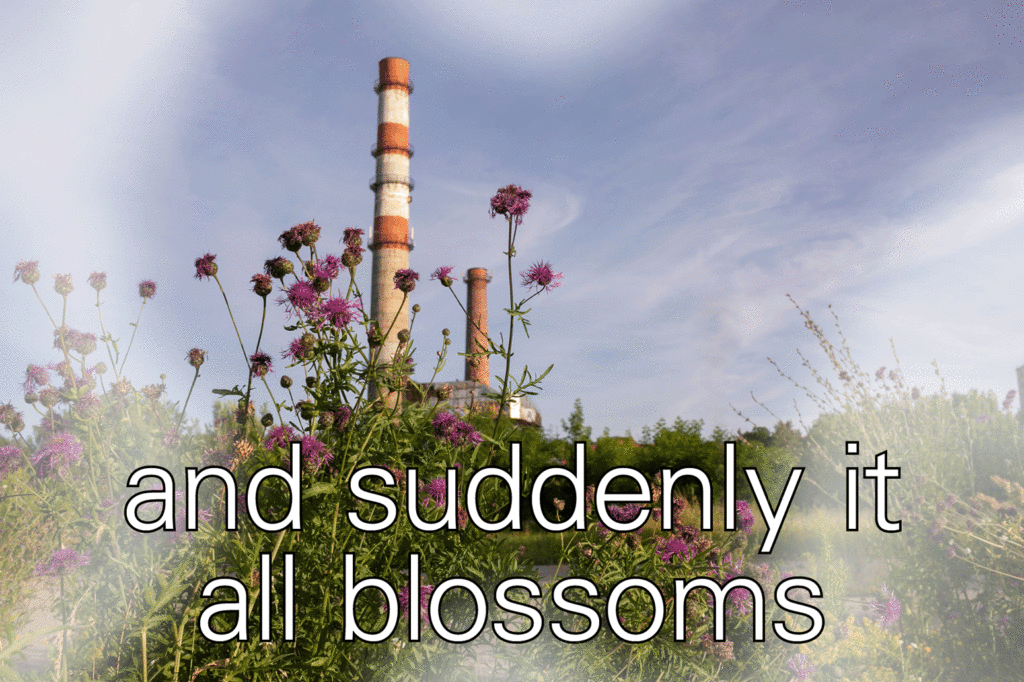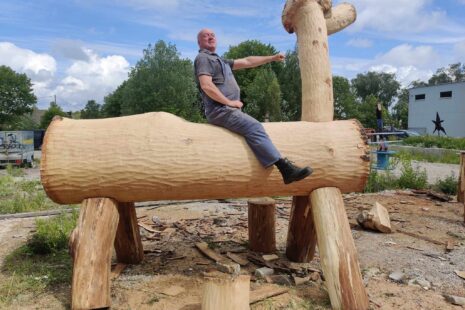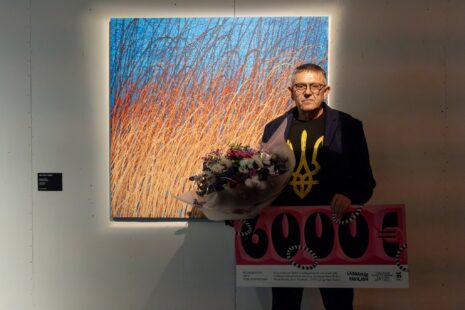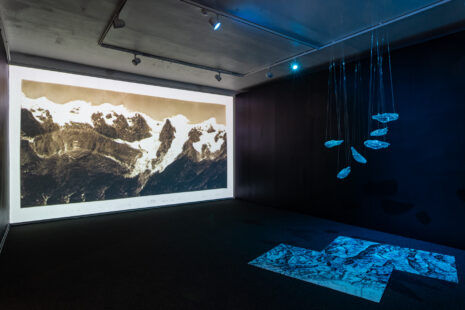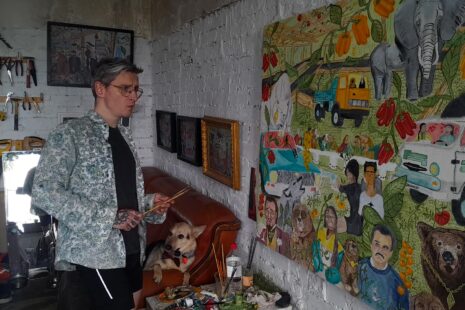Lamarche-Vadel says: “The collapse of the world the show was speculating on happened, offering a challenging yet historical chance to make RIBOCA2 even more relevant. Amidst the pandemic, our ways of building and understanding relationships are being confronted as we realise we are subjects in a landscape far more complex than our bodies and minds alone.”
On view
On approaching Andrejsala, visitors come across poems on billboards by Hanne Lippardevoking the “contactless” relationships that build the world we live in, its speed, ephemerality, and distance towards one another. On entering the first hangar, Ugo Rondinone’s monumental rainbow sculpture life time opens up perspectives on our understanding of time and existence. Visitors then encounter a field of stones and rubbles from demolished buildings around Riga, transformed daily by Bridget Polk’s rock balancing practice. The sculptures are held in seemingly impossible balances and stage a poetic re-appropriation of ruins and building of new worlds through patience and resilience. Continuing through the site, an installation on the waterfront by Lina Lapelytė and Mantas Petraitis, who have recreated the log-driving practices from Riga’s timber trade industry in the Middle Ages—when workers balanced on logs being transported down the river—reflects on the relationship between men, natural resources and the force of the river in a performative representation of vitality and desire.
The largest venue is a former port building with 36 works on view. For works that could not be shipped, finished, or started due to the pandemic, a display dialogue is planned instead. Marguerite Humeau’s work is represented by a guide describing the absent piece; a monumental sculpture inspired by Latvian folklore interrogating the hypothesis that climate change could be responsible for the rise of spirituality amongst animals.
During the three-week exhibition run, performances (Bridget Polk, Dominika Olszowy, IevaKrish, Bendik Giske, Nina Beier and Dora Budor), artist talks (Lina Lapelytė, Marguerite Humeau, Valdis Celms, Oliver Beer, Tomás Saraceno, Emanuele Coccia, Jaanus Samma and a continuation of the Biennial’s online series of conversations with Jack Halberstam, Avery F. Gordon, Vinciane Despret), guided tours and public programmes will be held while ensuring health and safety conditions.
Andrejsala – Between Ruin and Renovation
For RIBOCA2, the industrial port area of Andrejsala opens anew with access to previously restricted areas through exhibition design realised in collaboration with the architects LLRRLLRR (Laura Linsi and Roland Reemaa). Imagined as a 4–5-hour wander, the exhibition’s path is an encounter with other rhythms, a stroll through contemporary ruins, and an invitation to consider a new world growing out of them. Works are installed outdoors across the waterfront, in empty lots, meadows and wastelands, a former paintball field and within indoor spaces ranging from a hangar to a port building.
Beyond the exhibition
The project includes a feature length movie partly shot during the exhibition opening hours, transforming visitors into actors, to be released early 2021. Lamarche-Vadel, as artistic director, scriptwriter and co-director of the movie, has invited acclaimed Latvian film director Dāvis Sīmanis to co-direct.
The exhibition expands through a collaboration with restaurants across Riga inviting chefs to imagine the flavour of re-enchantment through vegetarian food.

